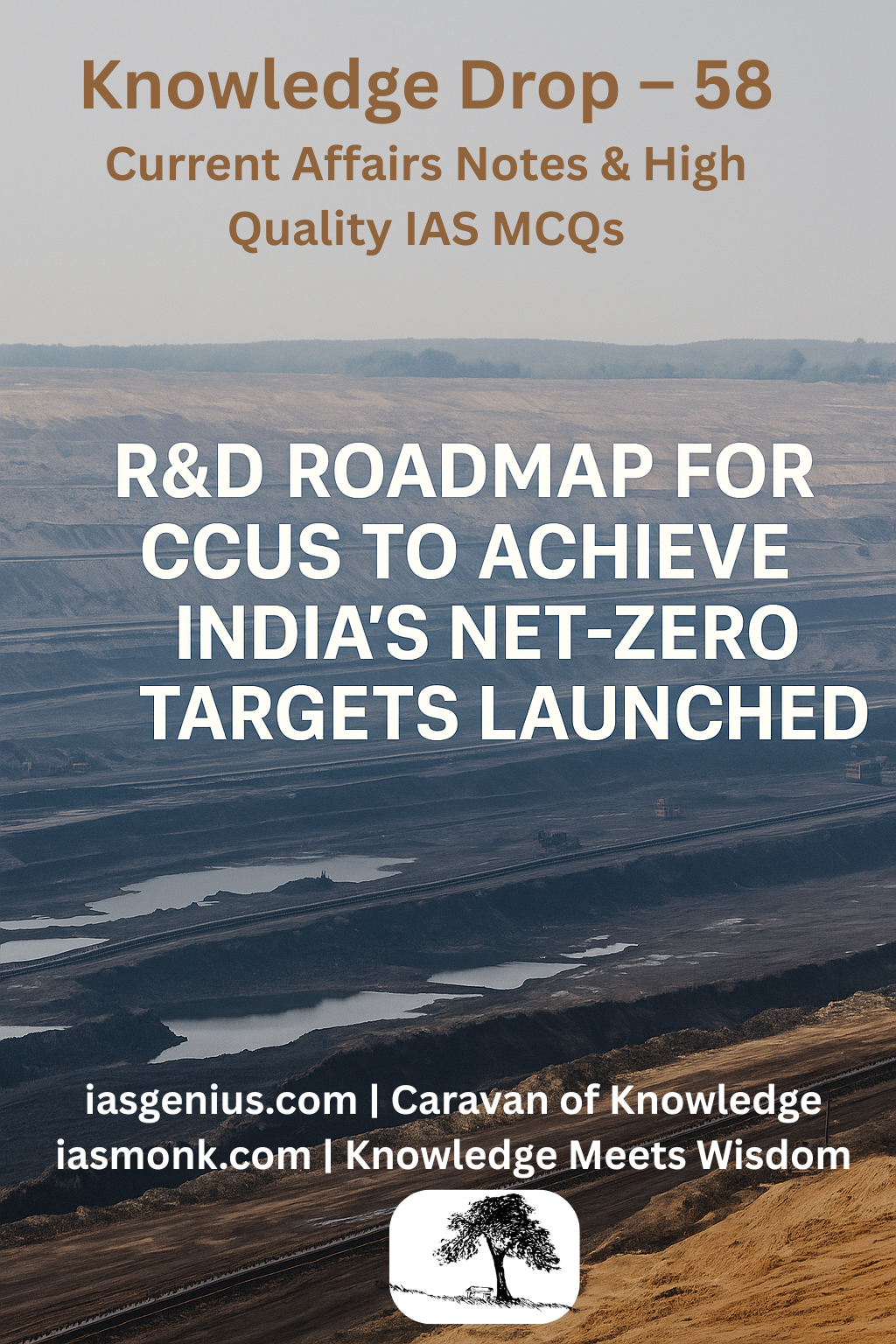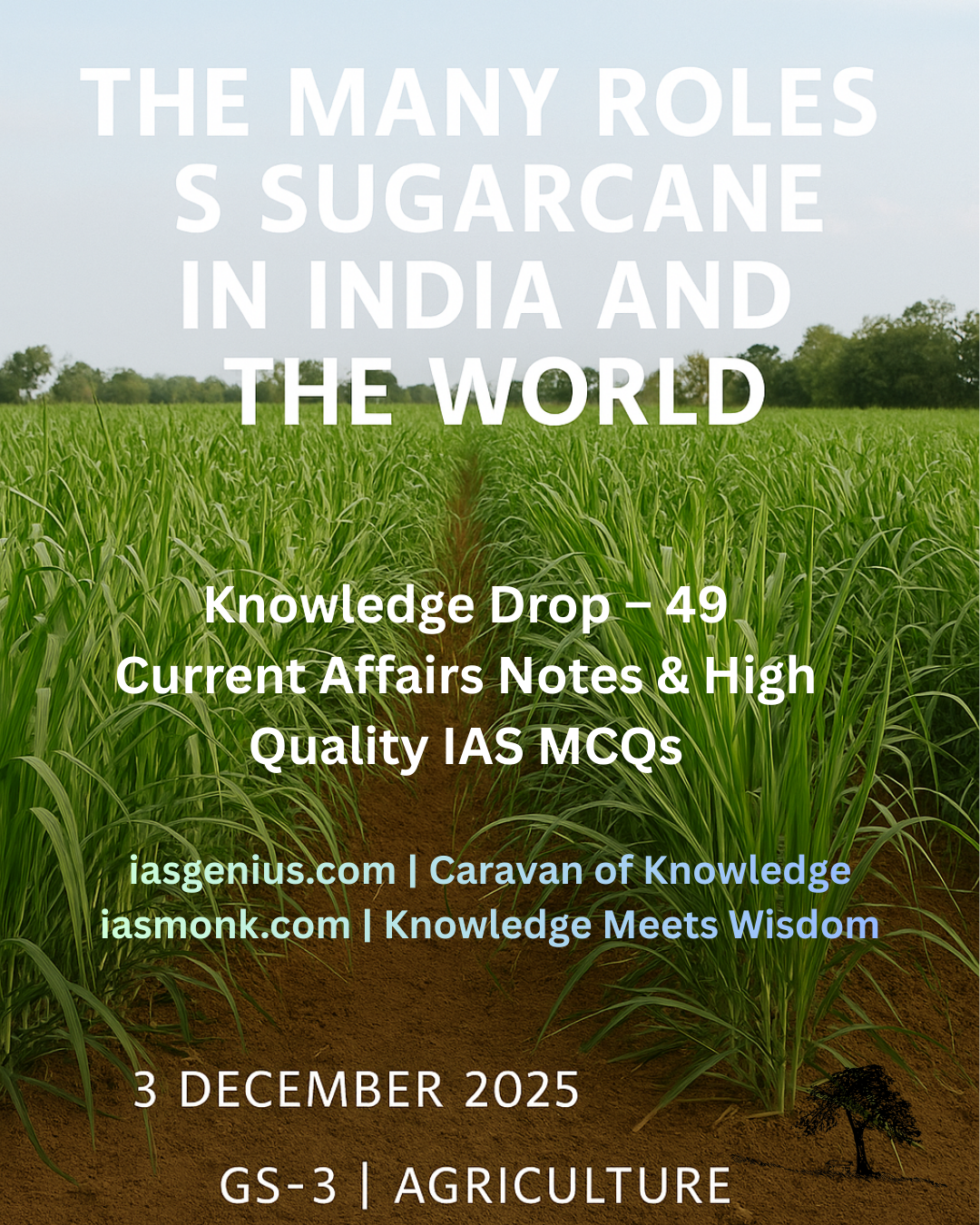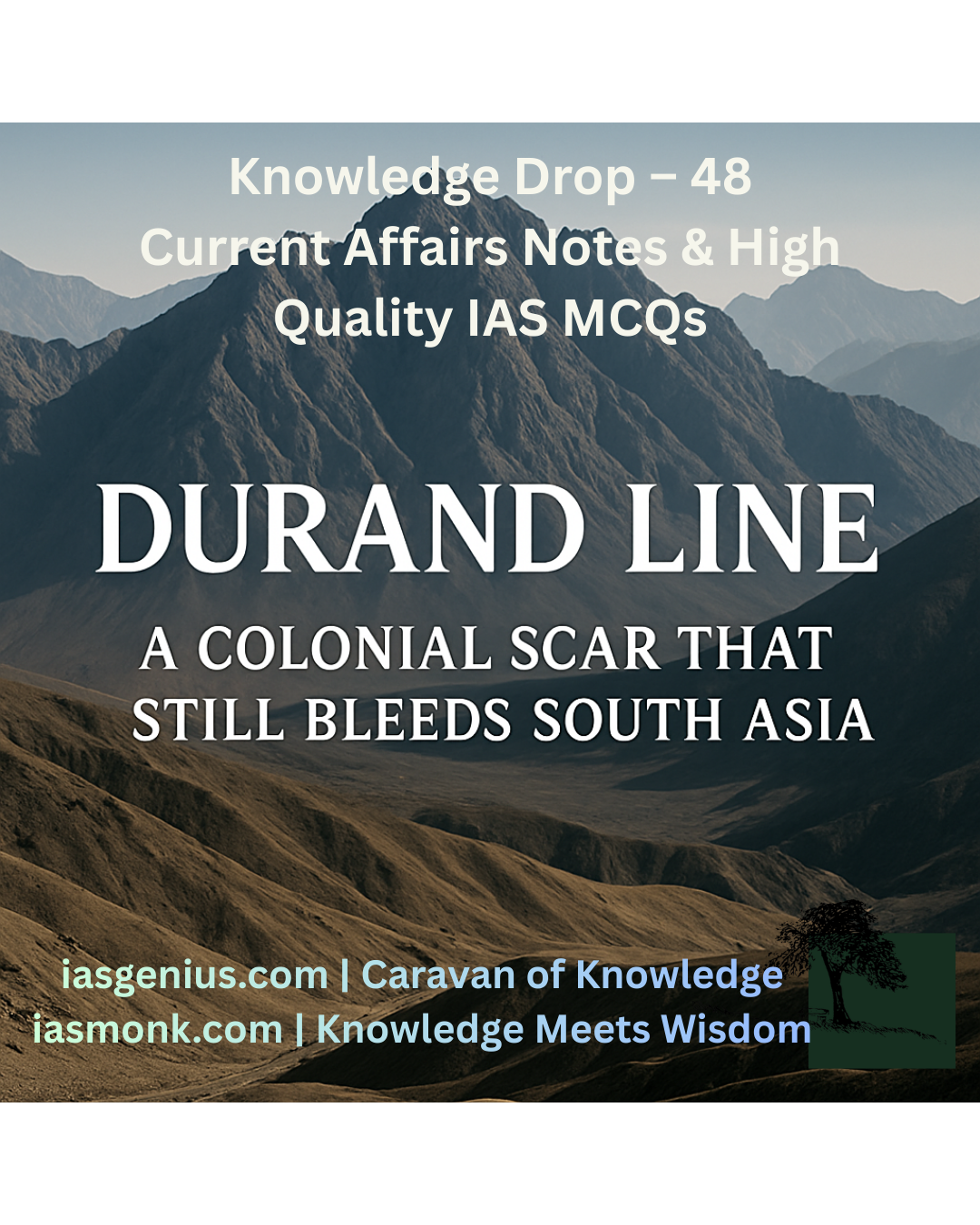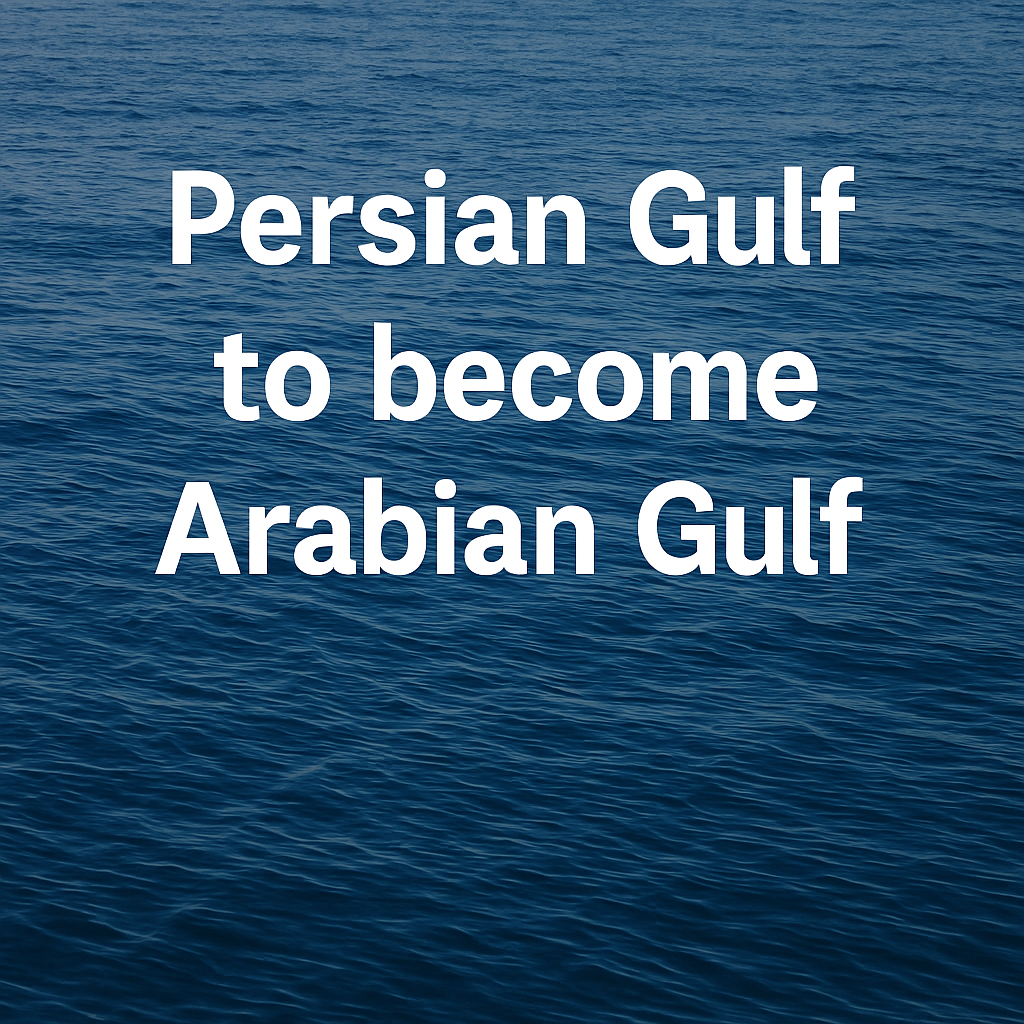
🧭June 9, 2025 Post 3: ANCIENT WHISPERS IN THE SALT DESERT Rann of Kutch | High Quality Mains Essay | Prelims MCQs
ANCIENT WHISPERS IN THE SALT DESERT Rann of Kutch

NATIONAL
🗓️ Date: June 9, 2025
📚 Thematic Focus: History, Archaeology, Culture
🌿 Opening Whisper
Somewhere beneath the salt-crust of time, the desert still remembers the first footsteps.
🔍 Key Highlights
- Pre-Harappan Settlement Discovery: Archaeological research near Dholavira (Great Rann of Kutch) reveals human habitation as early as 3300 BCE, predating the Harappan civilisation.
- Shells and Settlements: Tools, pottery, and marine shell remains (e.g., Terebralia palustris) indicate coastal hunter-gatherer life adapted to mangrove-rich environments.
- Seasonal Lifestyle: Evidence of foraging and shifting settlements based on resource availability.
- Stone Tool Technology: Tools made from non-local materials like basalt and quartzite hint at early inter-regional trade networks.
- Environmental Context: The Rann, once a coastal region with higher sea levels, supported these ancient communities before turning into the arid expanse we see today.
- Radiocarbon Dating: Finds dated between 3300 BCE and 1400 BCE, offering a new window into India’s prehistoric legacy.
- Future Research: Ongoing interdisciplinary studies aim to map prehistoric diet, migration, and cultural complexity.
The Harappan Civilization :
The Harappan Civilization (also known as the Indus Valley Civilization) was one of the world’s earliest urban civilizations, flourishing around 2600–1900 BCE in present-day Pakistan and northwest India. Key features include:
- Urban Planning: Well-organized cities (e.g., Mohenjo-Daro, Harappa) with grid layouts, brick houses, drainage systems, and public baths.
- Economy: Based on agriculture, trade (with Mesopotamia), and crafts like pottery, bead-making, and metallurgy.
- Writing System: Undeciphered Indus script found on seals.
- Decline: Possibly due to climate change, river shifts, or invasions (Aryans?).
Discovered in the 1920s, it remains a significant Bronze Age civilization alongside Mesopotamia and Egypt.
🧭 Concept Explainer
Why is the Rann of Kutch important in Prehistoric Studies?
Most associate the region with the Harappan city of Dholavira, but the latest findings take us even further back in time — to a forgotten world of coastal hunter-gatherers thriving on mangrove ecosystems. This discovery changes the way we view the evolution of settlement patterns in the Indian subcontinent, adding layers before the urban sophistication of the Indus Valley.
🧾 GS Paper Mapping
- GS Paper 1: Indian History – Prehistoric and Protohistoric Periods
- GS Paper 1: Geography – Geomorphological evolution of the Rann of Kutch
- GS Paper 1: Art & Culture – Archaeological Evidence and Cultural Continuity
- GS Paper 3: Science & Technology – Use of Radiocarbon Dating in Archaeology
🪶 A Thought Spark — by IAS Monk
When seas receded, they didn’t just leave behind salt —
they left behind stories…
of hands that carved tools from silence,
and dreams that lit the first hearths beneath an open sky.
High Quality Mains Essay For Practice :
Word Limit 1000-1200
Ancient Echoes in the Salt Desert: Unveiling the Pre-Harappan Legacy of the Great Rann of Kutch
Introduction
Beneath the desolate, shimmering salt flats of the Great Rann of Kutch lies a forgotten world — one that predates the mighty Harappan civilization and speaks of ancient communities who once thrived on the edges of what was once a coastal paradise. A recent archaeological revelation by the Indian Institute of Technology Gandhinagar (IITGN) has unearthed compelling evidence of human settlement in this region dating back to as early as 3300 BCE, marking a turning point in South Asia’s understanding of prehistoric human activity.
This essay delves into the significance of the findings, the socio-cultural patterns of these prehistoric communities, environmental transformations of the Rann, and what this means for India’s broader historical and archaeological narrative.
Discovery and Background
The story begins near Dholavira, a well-known Harappan site, but the new findings suggest an even older human presence. The discovery of ancient marine shells, stone tools, pottery fragments, and residential complexes has pushed the timeline of human habitation in the region back by several millennia. These discoveries are not isolated; they revisit observations made by 19th-century geologist Arthur Beavor Wynne, but with modern tools of radiocarbon dating, geochemical analysis, and paleoenvironmental mapping.
The collaborative nature of this investigation, bringing together archaeologists, geologists, marine biologists, and environmental scientists, underscores the interdisciplinary future of archaeological science in India.
Coastal Hunter-Gatherers: Life Before the Harappans
The prehistoric inhabitants of the Rann of Kutch were coastal hunter-gatherers — a mode of life often eclipsed by the attention given to agricultural and urbanized societies. Shell species such as Terebralia palustris found in excavated heaps suggest a diet heavily dependent on shellfish, indicating foraging habits in mangrove-rich environments.
The presence of fire pits, cooking shells, and residential layouts hint at small, seasonal settlements that would have moved cyclically in response to resource availability. These patterns represent a non-urbanised yet complex community — self-sustaining, adaptive, and intimately tied to the rhythms of the land and sea.
Toolmaking and Trade Connections
The array of stone tools recovered from the site — crafted from basalt, quartzite, and other non-local stones — illustrates both technical proficiency and long-distance material exchange. Basalt, for instance, is not locally found in the Rann but likely sourced from the Deccan Traps region, suggesting interregional movement or trade routes even at this early date.
This challenges the long-standing assumption that trade and mobility were features exclusive to post-Harappan societies. The Great Rann inhabitants, though ‘prehistoric’ by label, participated in proto-commercial networks, laying the cultural groundwork for later urban exchanges.
Dating the Findings: Radiocarbon Revelations
Perhaps the most remarkable aspect of this study is its chronological implication. Through radiocarbon dating of shell and charcoal remains, archaeologists have dated human activity in the area to between 3300 BCE and 1400 BCE. This predates the formal urbanism of the Indus Valley Civilization, and some of the shell beds are even older.
This opens up new academic territory for exploring pre-Harappan human settlements in western India, urging a revision of the linear timeline often taught in conventional history — from Stone Age to Harappan urbanism — by adding diverse transitional cultures in between.
Ecological and Climatic Context: Rann of Kutch Then and Now
The Great Rann of Kutch, today an expansive saline desert, was once a coastal wetland connected to the Arabian Sea. Paleoenvironmental reconstructions show that this region hosted dense mangrove forests, abundant marine life, and a high water table during the Holocene Climatic Optimum (approx. 9000 to 5000 years ago).
As climatic shifts set in — including sea-level decline, tectonic uplift, and monsoon variability — the mangrove ecosystem degraded, giving rise to the arid salt flat we see today. The early settlers of the region appear to have adapted to these changes with remarkable resilience, changing their subsistence strategies and possibly migrating inland.
Understanding how ancient communities responded to such environmental stressors holds contemporary relevance for modern climate adaptation policies.
Socio-Cultural Implications: Beyond Urban Bias
For decades, Indian archaeology has been dominated by the narrative of the Indus Valley Civilization, inadvertently neglecting the mosaic of cultures that coexisted or preceded it. This new discovery in the Rann helps fill a gap in our understanding of non-urban societies, especially those not based on agricultural intensification or monumental architecture.
These findings highlight:
- Cultural continuity between coastal hunter-gatherers and later Harappan settlements.
- The evolution of craftsmanship and material culture without centralized state systems.
- The presence of ritual practices, possibly linked to shell usage and seasonal gatherings.
Challenges and Research Gaps
Despite the excitement, several challenges remain:
- The fragile preservation of artefacts due to high salinity and erosion.
- A lack of extensive excavation across the Rann — most studies are limited to small clusters.
- Limited public funding for multidisciplinary pre-Harappan research.
Future research must prioritize:
- Expanded fieldwork using remote sensing, LIDAR, and geoarchaeological surveys.
- Cross-institutional collaboration among national and international researchers.
- Development of a dedicated museum or interpretation center at the site.
National Importance and Global Relevance
The revelation of ancient human life in the Rann of Kutch repositions India as a key site in global prehistoric studies. It offers a southern counterpart to the Mesopotamian and Nile Valley narratives, proving that cultural sophistication predates urbanization.
For UPSC aspirants and policymakers alike, this signifies:
- The importance of archaeology in cultural diplomacy, heritage tourism, and educational policy.
- A push for institutionalizing archaeological science, as emphasized in the National Education Policy 2020.
- The necessity to preserve indigenous knowledge systems, especially those that evolved with the environment.
Conclusion
The salt deserts of the Great Rann may seem barren and silent, but beneath their surface lie the footprints of India’s forgotten ancestors — communities that cooked shellfish in mangrove groves, traded with distant lands, and built the earliest homes before bricks were fired in Harappa.
This discovery is not just about the past; it is about reimagining how history is written, remembered, and taught. In rediscovering these ancient whispers, India gains a richer, more layered understanding of its civilizational journey — one that begins not with kings and citadels, but with families huddled around fire pits, gazing at the sea.
Target IAS-26: Daily MCQs :
📌 Prelims Practice MCQs
Topic:
MCQ 1 – Type 1: How many of the above statements are correct?
Consider the following statements regarding recent archaeological findings in the Great Rann of Kutch:
1. Radiocarbon dating confirms human habitation in the region from around 3300 BCE to 1400 BCE.
2. The site contains tools made only from local materials like saltstone and clay.
3. Shell species discovered at the site suggest dependence on marine foraging.
4. The environment during early habitation was a lush coastal zone with mangrove ecosystems.
How many of the above statements are correct?
A) Only two
B) Only three
C) All four
D) Only one
🌀 Didn’t get it? Click here (▸) for the Correct Answer & Explanation
✅ Correct Answer: B) Only three
🧠 Explanation:
1) ✅ True – Radiocarbon dating places the settlement between 3300 BCE and 1400 BCE.
2) ❌ False – Tools were made from both local and non-local materials like basalt and quartzite.
3) ✅ True – Shells like Terebralia palustris suggest heavy reliance on marine resources.
4) ✅ True – The region was a coastal wetland with mangroves, later transformed by climate shifts.
MCQ 2 – Type 2: Two Statements Based
Consider the following statements:
1. Arthur Beavor Wynne was the first geologist to report shell findings in the Great Rann of Kutch.
2. The prehistoric community in the region practiced settled agriculture as their primary livelihood.
Which of the above statements is/are correct?
A) Only 1 is correct
B) Only 2 is correct
C) Both are correct
D) Neither is correct
🌀 Didn’t get it? Click here (▸) for the Correct Answer & Explanation
✅ Correct Answer: A) Only 1 is correct
🧠 Explanation:
1) ✅ True – He reported shell remains in the late 19th century.
2) ❌ False – The community were coastal hunter-gatherers, not settled agriculturists.
MCQ 3 – Type 3: Which of the statements is/are correct?
Which of the following statements regarding the prehistoric inhabitants of the Rann of Kutch are correct?
1. They practiced seasonal migration based on availability of resources.
2. Stone tools recovered from the site include non-local materials.
3. There is no evidence of trade with neighboring regions.
Select the correct code:
A) 1 and 2 only
B) 2 and 3 only
C) 1 and 3 only
D) 1, 2 and 3
🌀 Didn’t get it? Click here (▸) for the Correct Answer & Explanation
✅ Correct Answer: A) 1 and 2 only
🧠 Explanation:
1) ✅ True – Evidence suggests a seasonal hunter-gatherer lifestyle.
2) ✅ True – Tools were made from materials like basalt and quartzite.
3) ❌ False – Presence of non-local materials suggests trade existed.
MCQ 4 – Type 4: Direct Fact
Which of the following species of shellfish discovered in the Rann of Kutch indicates prehistoric foraging activity?
A) Terebralia palustris
B) Crassostrea virginica
C) Pinctada fucata
D) Littorina littorea
🌀 Didn’t get it? Click here (▸) for the Correct Answer & Explanation.
✅ Correct Answer: A) Terebralia palustris
🧠 Explanation:
•A) Terebralia palustris, a mangrove-dwelling gastropod, was found in large quantities, indicating ancient foraging in mangrove environments.


















